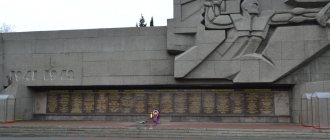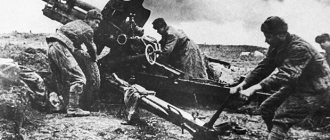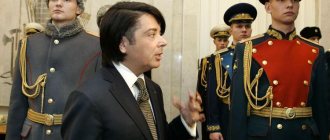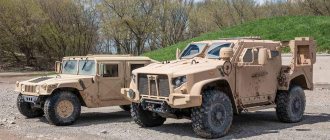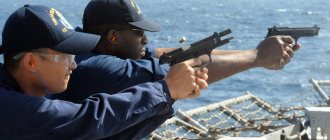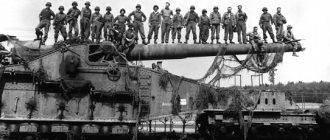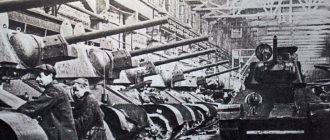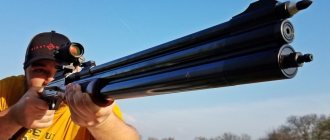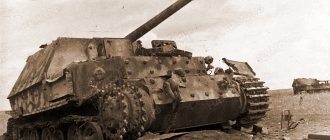Who was drafted into the Russian army before the Crimean War?
Under Nicholas I, as under his predecessors, the Russian army consisted mostly of recruits. In 1831, a recruitment charter , which declared military service compulsory for persons of the tax-paying classes: peasants, petty bourgeois, and soldiers' children. Nobles, merchants, honorary citizens and clergy were exempt from military service.
Approximately 80 thousand people were drafted into the army each year (from 1835 to 1854). Men from 20 to 35 years old were recruited for service. The service life was determined to be 22-25 years. However, in order to have a trained reserve, it was a widespread practice, after 15 years of excellent service in the active army, to release soldiers on indefinite leave, but muster them annually for monthly military training during the remaining period of service.
The officer corps was composed of nobles. Officers were promoted to persons who graduated from military educational institutions, cadet corps, schools and colleges, and from among the volunteer population. To train officers of the General Staff, a military academy was created in 1832 - the first higher military educational institution. In 1855, already during the Crimean War, artillery and engineering academies were also established.
Causes
The main causes of the Crimean War were the following:
- strengthening the influence of tsarism over political processes in Europe;
- oppression of Orthodox peoples in the Balkans.
- strengthening the national liberation movement in the Balkans;
- Russia's loss of relative control over the straits;
- revanchist and anti-Russian sentiments in the leading countries of Europe.
Occasion
The impetus for drastic measures was the dispute between the Orthodox and Catholic churches over the Holy Land and the church in Jerusalem. Each side claimed a dominant role in Bethlehem.
The size of the Russian army
Russia, according to the report of the Minister of War on January 1, 1853, had an impressive army numbering nearly one and a half million people. Among them were:
- up to 31 thousand 400 generals and officers.
- 1 million 151 thousand 408 people of regular troops, of which 938 thousand 731 people were in active service and 212 thousand 677 people were on indefinite and annual leave.
- There were 245 thousand 850 people in the irregular troops (89 thousand 168 people in active service).
Infantry made up 2/3 of the total number of all troops, cavalry 1/5, artillery 1/3.
Goals of the parties
For each of the participants in the clashes, the reasons and necessity for this war were different, so now we will detail these points a little.
For Russia:
- destruction of the Ottoman Empire as a single state;
- establishment of a protectorate over the territories of Bulgaria, Moldova, Serbia and Wallachia;
- establishing control over the Bosporus and Dardanelles straits.
For Turkey the meaning was as follows:
- return of territories: Crimea, the Black Sea coast and the Caucasus;
- suppression of the national liberation movement in the Balkans.
England and France were united in their desire:
- weakening Russian influence on the Balkan Peninsula;
- preserve Turkey as a strong antidote to the influence of Russian tsarism in Europe;
- to carry out revenge for the defeat in the Patriotic War of 1812.
Russian ground forces on the eve of the Crimean War
Infantry
The infantry was divided into linear and light. The light force consisted of rangers, carabinieri and riflemen, armed with rifles and united in rifle battalions. Riflemen armed with rifles represented a new type of infantry, differing from the existing light Jaeger infantry both in organization and armament. The Jaeger infantry continued to be used primarily in the rifle chain. During the Crimean War, infantry rifle battalions showed their enormous advantage over rangers. Subsequently, it is light, and after a few years all infantry becomes uniform in armament, having received a rifled gun.
By 1853, the entire infantry numbered 110 regiments (including 10 guards, 12 grenadiers, 4 carabiniers and 42 chasseurs), 9 rifle battalions, which at the beginning of the war reached a thousand strength (before the war they had 180 lower ranks per company) and 84 Georgian, Black Sea, Caucasian, Orenburg, Siberian and Finnish line battalions.
The infantry regiment mostly consisted of 4 battalions, a battalion of 4 companies, a company numbered 250 people.
On the batteries of Sevastopol
Cavalry
Before the Crimean War, cavalry was divided into heavy cavalry: cuirassiers and dragoons, and light cavalry: lancers and hussars.
There were 59 cavalry regiments: 23 heavy (12 cuirassiers and 11 dragoons) and 36 light (20 lancers and 16 hussars).
The cavalry regiments consisted of:
- cuirassiers from 8 squadrons
- dragoons from 10 squadrons
- all Uhlan and Hussar cavalry regiments had 8 squadrons.
A division was made up of two squadrons in combat terms. The squadron consisted of 133 cavalrymen (lower ranks) and had 15 or 16 ranks in a platoon. In the squadron, which was supposed to have 15 ranks, the platoon consisted of:
- retired officers: 13
- trumpeters: 4
- privates: 120
in a squadron of 16 rows in a platoon:
- non-commissioned officers: 16
- trumpeters: 4
- privates: 128.
Artillery
Do you know that…
How many battleships did the USSR have in the Baltic?
, before the Second World War?
The field artillery in peacetime numbered 1,134 guns (of which 232 were mounted) and 1,446 in wartime (with the same number of mounted). Some of the guns were mothballed, and their servants were on indefinite leave.
There were 135 batteries in the field artillery, including 29 horse batteries. Foot batteries mainly consisted of 12 guns in wartime, and 8 in peacetime. Batteries were organized into four-battery brigades, and brigades into divisions; the latter were administrative and organizational rather than tactical formations. When organizing artillery, the principle was that there should be one foot battery for one infantry regiment, and one horse battery for two cavalry regiments.
The adoption of long-range guns confronted the artillery with the need to change gun designs. With a maximum firing range of 300 fathoms (~640 m) from cannon guns, it was impossible to effectively prepare an infantry attack, since the artillery personnel, even as the guns approached the enemy within sighting shot range, lost up to half of their men and horses to long-range small arms.
The artillery was faced with the task of increasing the range of fire compared to the fitting. The transformations of Russian artillery undertaken in 1838 greatly improved the guns of the 1805 model, but left the firing range almost unchanged.
The artillery fired bomb shells at a distance of 500-600 fathoms (~1070-1280m), twice the firing range of buckshot. All the guns in service with the field army were copper, smooth-walled, and loaded from the muzzle.
Rocket batteries
Don’t be surprised, but the Russian army of the mid-19th century already had one missile battery. In peacetime, it was located at the St. Petersburg rocket establishment; in wartime, it was at the disposal of the active army. The missile battery consisted of four firing platoons, each having eight tripod-mounted missile launchers. New missile units were formed directly at the front.
In the Crimean War, missile units operated in the Danube and Caucasus theaters, as well as in the defense of Sevastopol.
The rocket consisted of a cartridge case filled with a powder charge, a warhead (head projectile) and a tail. The firing range of some types of military missiles exceeded the firing range of conventional artillery pieces. A rocket (4-inch siege) with a 1/4-pound grenade had an average firing range of 4 thousand 150 m, and a mountain cannon (with the same projectile weight) - 1 thousand 810 m. The rate of fire of the rocket (4 shots per minute) was higher than the rate of fire of artillery guns Combat missiles were used in field battles, during siege and defense of fortresses.
The missiles were equipped with various projectiles: targeting missiles - grenades and grapeshot, siege or fortress missiles - grenades, incendiary caps, illumination cannonballs and land mines - shells with explosives. Machines for firing rockets were lightweight, easy to carry, and they were used on any terrain and in any conditions. Combat missiles constituted an essential auxiliary element in artillery. With the advent of rifled artillery in the Russian army in the 60s of the 19th century, work on combat missiles began to fade away.
Occasion
When there is a tendency in the world towards war and aggravation of relations between states, the most minor misunderstanding can become the reason for the outbreak of clashes between countries. In this case, the event was quite serious.
Control of the Holy Sepulcher in the city of Bethlehem in 1853 (in the beginning) was transferred to the Catholics, that is, it was given to the French and Italians. For the Russian Orthodox Church, as the embodiment of tsarism, this blow was very offensive, so hostilities began immediately.
How the Russian army was organized before the Crimean War
The highest organizational unit were corps, mostly consisting of 3 infantry divisions of four regiments (united in 2 brigades), 1 cavalry and 1 artillery divisions, 1 rifle and 1 engineer battalions.
There were 14 corps in total, including 11 infantry (of which 1 guards and 1 grenadier) and 3 cavalry (guards, 1st and 2nd reserve), consisting of two-brigade cavalry divisions (2 regiments in a brigade). Armies were made up of corps and divisions.
Consequences
The Peace of Paris was signed on extremely unfavorable and humiliating terms for the Russian Empire. Influence in the Balkans and the Middle East was seriously undermined.
In 1871, the terms of the treaty were reviewed and changes were made. Russia was returning ownership of the fleet on the Black Sea. Such successes were due to the talent of the Russian diplomat Gorchakov.
The main consequences of the Crimean War for Russia:
- push for significant reforms. 1861 - abolition of serfdom;
- abolition of 25 years of military service;
- encouraging the development of the railway network on the territory of the Russian Federation as an engine of progress.
In England there was a government resignation, and in the Ottoman Empire there was a default in 1858. We can't point out any serious consequences for France.
Armament of the Russian army of the 19th century
The bulk of the infantry and cavalry were armed with smoothbore muzzle-loading flintlock and percussion rifles. There were only a small number of rifled rifles, also loaded from the muzzle, in the army. In the Russian army, by the beginning of the war, only 0.04 active infantry were armed with rifles (1 thousand 810 rifles for 42 thousand 208 rifles in the corps). The war found the Russian army just as it was preparing to rearm.
The longest firing range with satisfactory accuracy for smoothbore rifles was 300 steps, but the most lethal distance in battle, according to calculations by N.V. Medema was equal to 150-100 steps. For rifled guns, the firing range reached 1 thousand 200 steps. Loading a gun was a difficult task, requiring great skill; it was done in 12 steps. The rate of fire (per minute) of percussion rifles reached: 1.5 shots, the maximum rate of fire of flintlock rifles: 1 shot.
In the 40s, instead of silicon ones, impact fittings were introduced into service, which were distinguished by a higher rate of fire. At the same time, the production of flintlock smoothbore rifles ceased and their conversion into percussion rifles began. The transition to shock weapons in Western European armies also dates back to the 40s of the 19th century.
Commemorative medal of a participant in the Crimean campaign of 1853-1856.
Commanders and military leaders
There is no point in talking about the leadership of enemy armies, since for the most part the names of these people are not known to a wide circle of readers. Among the leaders of the Russian army we highlight:
- Admiral Nakhimov;
- Vice Admiral Kornilov;
- Prince Menshikov;
- General Totleben;
- Rear Admiral Istomin;
- Field Marshal Paskevich.
It was under the leadership of these people that the Russian army carried out the heroic defense of Sevastopol and participated in other battles.
Battle formations of the Russian army
- Deployed in three ranks : intended for rifle fire
- Column : for bayonet attack
- Square : against cavalry
- Scattered formation: rifle chain.
With the advent of riflemen armed with rifles, changes occurred in the tactics of light infantry, caused by the range of their rifles. Since the 40s, new light infantry has been appearing everywhere and the old scattered formation is gradually taking on new forms, marking the emergence of new tactics for the entire infantry-rifle chain in its full understanding.
Before the Crimean War and during its course, columns were considered the main infantry formation. The battalion was built in divisional, platoon, half-platoon columns, and in an attack column; company columns were also used.
The company was divided into two platoons, and a platoon into two half-platoons.
When stationed on the spot and when moving, the battalion was usually built in a half-platoon column from the middle (the 4th and 5th platoons stood at the head of the column, and behind them: behind the 5th (on the left) were the 6th, 7th, 8th platoons and behind the 4th (on the right) - 3, 2 and 1st platoons). The front of the half-platoon column from the middle was 25 steps, and the depth was 32 steps.
The battalion went on the attack in a column to the attack (platoon from the middle), occupying 50 steps along the front and 40 steps in depth.
The basis for building the column was a three-rank formation. The battalion's combat formation for the attack consisted of compact three-rank lines that followed the attack at short distances from one another (12 ranks in total).
Company columns were more suitable for combat than battalion columns. A battalion in company columns - these are companies built in a platoon thick column (the front of which is equal in depth) and located one from another at a distance of 100-150 steps, was more effective in a bayonet attack and suffered fewer losses from enemy fire.
The scattered formation of the rifle chain, operating in front of the front, was considered as an auxiliary formation intended for light infantry-jaegers and rifle infantry; The huntsmen were located in pairs, at a distance of one pair from the other from 3 to 15 steps. The scattered formation consisted of a “skirmisher” chain, moving forward on level ground no further than 200 steps, and a reserve. The scattered formation consisted of 48 skirmishers and 6 riflemen, available in each company. The fittings were located between the skirmishers.
The deployed formation of the battalion consisted of deployed companies, built in one three-ranked line, and occupied 180-200 steps along the front; The battalion fired in volleys and in rows (alternately).
In general, the infantry battle formation consisted of two lines and a reserve. The battalions that made up the first line stood in attack columns, at intervals of 100 to 300 steps, or in deployed formation, less often in company columns. The battalions of the second line were in attack columns; in the third reserve line, the battalions were located in half-platoon columns from the middle. The second line from the first line was located at a distance of 100-300 steps, and the reserve line was 400-500 steps from the second line. Up to half of all troops were allocated to the reserve. In battle, in the event of a breakdown in front of the line in front, the battle lines replaced one another, for which purpose various orders for changing lines were established, which sometimes made it difficult to conduct the battle and often caused troops to move forward for battle in parts.
The cavalry lined up for an attack in a deployed formation, for a scattered attack - in loose formation, for maneuvering - in columns. The flanking formation used in cavalry was intended for fire combat: the half-squadrons sent forward scattered into a chain; Small support groups were left behind 100 steps from each platoon; all other half-squadrons moved 100 paces behind the support groups in close formation.
Main stages
This war, according to historians, is divided into 2 stages: before Turkey’s allies entered hostilities and after that.
Stage I : October 1853 - April 1854 battles between Turkey and Russia;
The main events of this time period are as follows:
- Battle of Sinop;
- battles in the Caucasus and Danube directions.
Stage II : spring 1854 - February 1856 - Russia conducts military operations against Turkey, France, England.
The second period was characterized by:
- the entry into the war of England, France and Sardinia;
- active offensive operations by sea against Russia in the Black Sea and the Arctic Ocean.
Supply of the Russian army of the 19th century
In the training of Russian troops, preference was given to actions in close formation and marching. Troops received little training in conducting aimed fire, the role of which increased significantly with the adoption of rifled weapons, with the exception of light infantry. Military theoretical thought continued, in general, to assess the role of the bayonet and fire in battle as before. This can partly explain the delay in the entry into service of the army of fittings.
During the war, the troops received their allowances from reserves - permanent, mobile and obtained at the theater of war itself, including through requisitions that were made in special cases.
Prerequisites
The main prerequisites included tense international relations, at the center of which was the Ottoman Empire. The latter came under the control of Great Britain, which fundamentally did not suit the rest of the countries. Turkey also pursued a cruel policy against the Slavic peoples on the Balkan Peninsula; this situation of the fraternal peoples did not suit the Russian Empire. France sought to strengthen its position in the Middle East.
The main prerequisite for the start of active hostilities in the middle of the 19th century in relation to the Russian Empire was the London Convention on the Organization of Maritime Traffic through the Bosphorus and Dardanelles, signed in 1841.
The fact is that in the period from 1833 to 1841, the Treaty of Iskelles was in force, under the terms of which Russia had the right to demand that the Ottomans close the straits to the passage of any ships that, in the opinion of the Russian leadership, should not end up in the waters of the Black Sea.
The London Convention provided for slightly different conditions:
- the straits are closed to military vessels in peacetime;
- permission may be given for the passage of small warships of friendly states to the diplomatic missions of their countries.
It was on the basis of this norm that the passage of ships of the Turkish allies, which entered the war against the Russian Empire, became possible.
All this led to tension between the countries and resulted in open confrontation.
